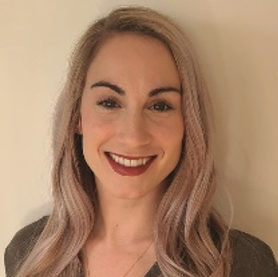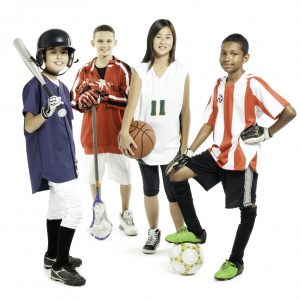Female Athletes and ACL Prevalence
As a former female division 1 gymnast, I personally experienced and witnessed many types of injuries. I had a few teammates who had recurring injuries that impacted their ability to continue the sport they loved. Seeing the sub-par rehabilitation process in a college setting without physical therapy interventions available, re-injury was extremely common. Many of these recurring injuries involved the knee and internal knee structures such as the ACL, PCL, MCL, and LCL.
 ACL injuries are becoming more and more common in the young athlete, but did you know that female athletes are up to 10 times more likely to experience an ACL injury compared to men? This may be due to the anatomy and biomechanics of the female knee joint. Often due to wider hips and a smaller groove at the bottom of the femur where the ACL inserts, the ACL in the female knee may experience greater stress and further restriction during twisting, jumping, changing direction, and landing movements compared to men. Other contributors to increased risk of injury include weakness of the posterior chain musculature (glutes and hamstrings) and ligament laxity during hormone cycles. Recent studies have found that woman may be more susceptible to ACL injury just prior to ovulation compared to the follicular phase due to increased ligament laxity.
ACL injuries are becoming more and more common in the young athlete, but did you know that female athletes are up to 10 times more likely to experience an ACL injury compared to men? This may be due to the anatomy and biomechanics of the female knee joint. Often due to wider hips and a smaller groove at the bottom of the femur where the ACL inserts, the ACL in the female knee may experience greater stress and further restriction during twisting, jumping, changing direction, and landing movements compared to men. Other contributors to increased risk of injury include weakness of the posterior chain musculature (glutes and hamstrings) and ligament laxity during hormone cycles. Recent studies have found that woman may be more susceptible to ACL injury just prior to ovulation compared to the follicular phase due to increased ligament laxity.
The most common form of treatment following ACL injury is a reconstructive surgery using a graft from either the patient’s own patellar tendon, hamstring, or an ACL from a cadaver. Although an athlete may go through ACL reconstruction, it does not guarantee normal functions of the knee or prevention of subsequent knee injury. In recent studies, it has shown that about half of athletes who underwent ACL reconstruction return to high level sports, and only about 20% of these younger athletes will return to higher level sports in the first year following injury. Given these findings, it is extremely important that ACL rehabilitation encompasses deficits related to surgical interventions as well as initial cause of injury occurring prior to surgery.
Current generalized ACL rehabilitations programs may not have all-inclusive motor training, and neuromuscular re-education needed to safely allow return to sport within one year’s time. It has been statistically proven that proper recruitment and strength of the posterior chain as well as muscles that stabilize the knee will decrease risk of re-injury in the young athlete with a prior ACL tear. Physical therapists have the training and knowledge to specifically pinpoint weakness and instability within the hip and knee complex, analyze gait and movements patterns, and build sport specific training programs to assist in injury prevention of the young athlete.
In early rehabilitation, it is crucial to protect the graft site, and begin regenerating the quad musculature. Research shows that following knee injury or surgical interventions there is a reflex response to inhibit muscle activation called Arthrogenic Muscle inhibition (AMI). Physical therapy can assist in targeting the muscles that have been affected during this reflex inhibition process. Some examples include quad setting, resisted terminal knee extension, straight leg raises with a knee extension brace until the patient can complete a straight leg raise without knee flexion. Other exercises to assist overall hip and knee stability include closed chain activity such as partial squats, step ups, single leg balance activities, and bridges. It is critical for the physical therapist to ensure the patient is completing exercises without compensatory strategies and progressing toward proper movement patterns.
Due to the high prevalence of re-injury, as well as muscular inhibition following knee injury, it is highly recommended that athletes, specifically women receive intensive rehabilitative care following ACL repair. Without specific neuromuscular re-education, proper movement pattern restoration, and addressing pre-injury mechanical deficits, young athletes are at risk for re-injury or significant time lapses as they attempt to return to sport. Physical therapy can provide young athletes with the education and tools they need for success as they return to the sports they love.



